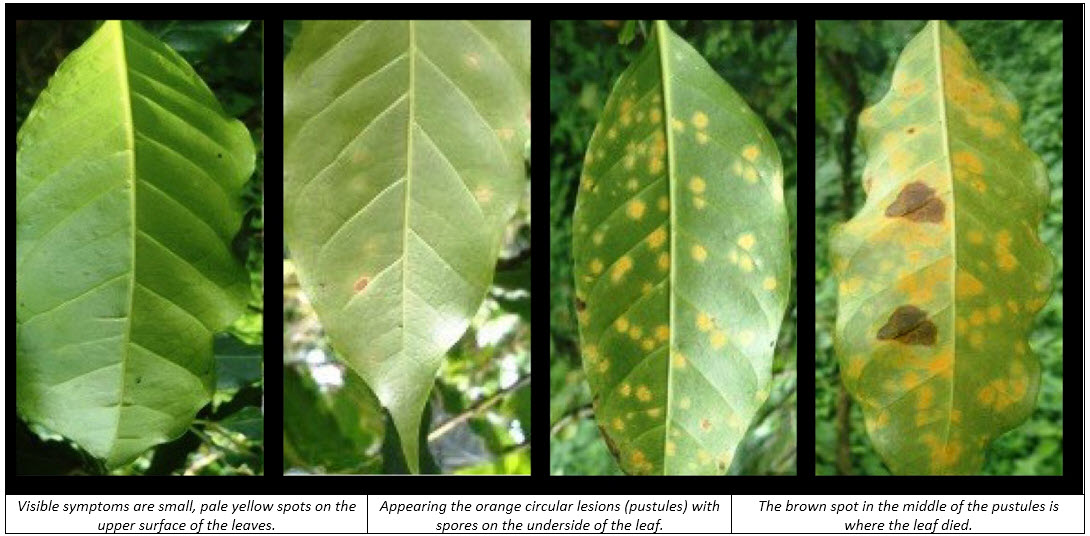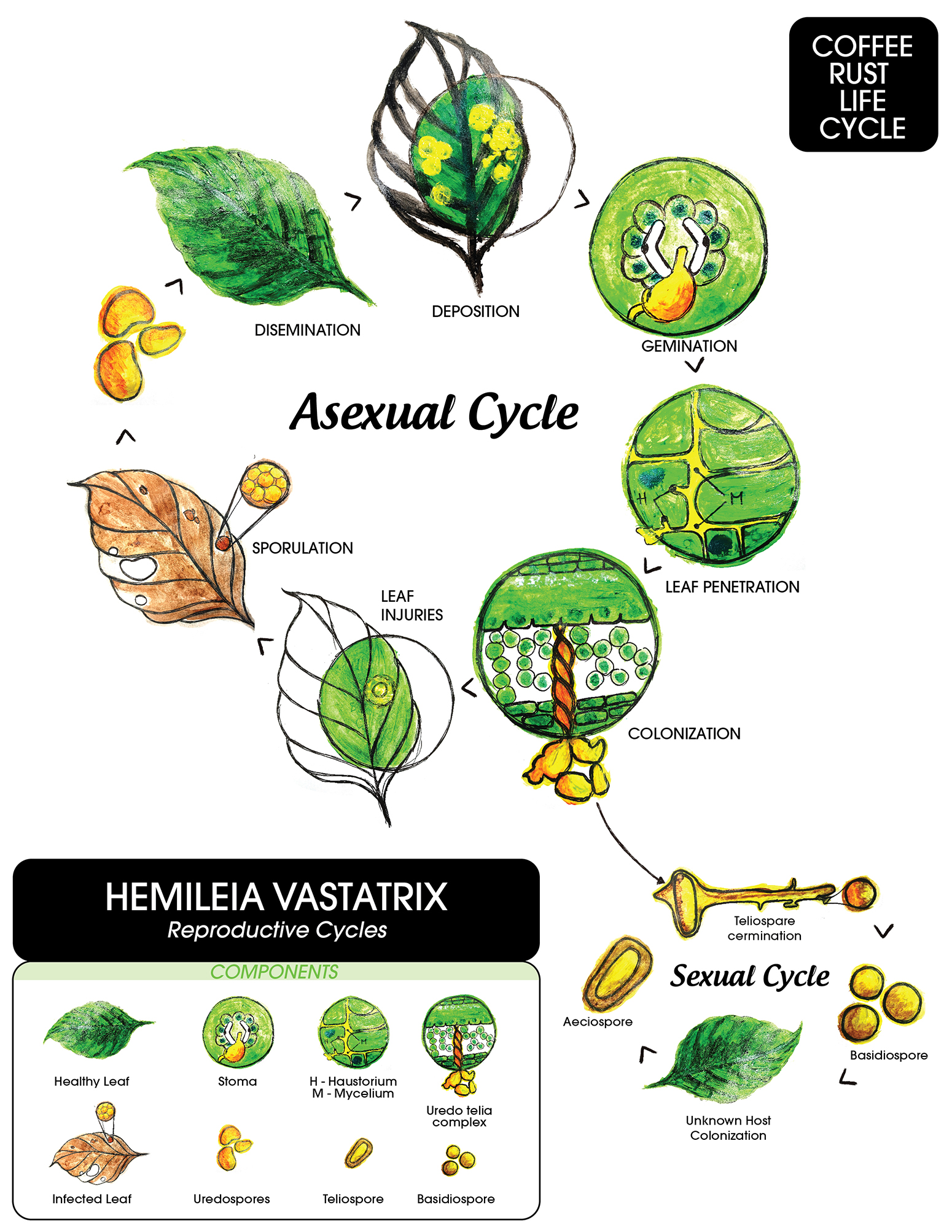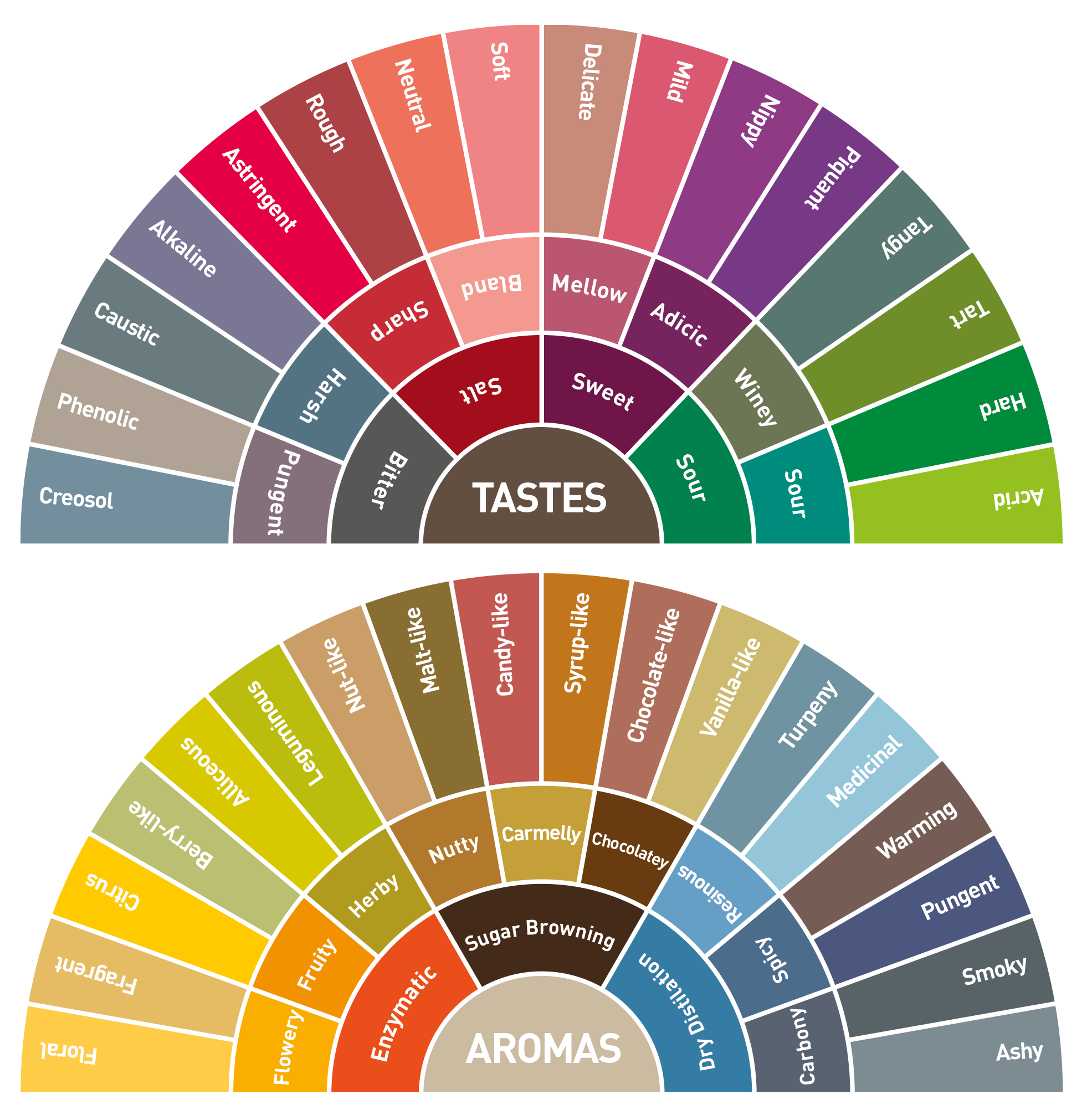How to treat coffee rust with microbial bio-fertilizer prevention and control of coffee leaf rust
Coffee leaf rust is considered one of the most severe diseases affecting coffee plants. The disease has caused major losses in coffee production areas in the countries of America, Asia, and Africa. MicroebeBio understands the plant physiology is closely related to the functioning of plant organs and tissues, which may be affected or favored by interaction with climatic factors. The factors that directly influence the development and productivity of the coffee plants are temperature, precipitation, relative humidity, dew, and solar radiation, which play roles in the processes of photosynthesis to produce food substances (sugars, proteins, etc.). MicrobeBio performs a completed patented biotechnology package harmonizing with a special growth boost package to synthesize as complex system plant nutrients, crucial vitamins, naturally occurring minerals, and selective microorganisms that dominate the environment through competitive prohibition by eliminating harmful pathogens (including coffee rust) and bacteria that invade the rhizosphere.
What is coffee rust (coffee leaf rust)?
Coffee rust is caused by the fungal pathogen known as Hemileia vastatrix. Coffee rust infection, especially when combined with drought, can lead the flower abortion, poor quality berries, and lower harvestable yield.

On the plant, it causes:
- Leaves turn brown
- A lack of maturation
- Undeveloped fruit leaves
- Losing in quantity and quality of fruit production
Coffee Rust Life Cycle:

Dissemination stage
Dissemination occurs through spores that appear as yellow or orange powder, found on the underside of the coffee plant’s leaves. In the ideal condition, the fungus will disseminate its spores among coffee trees in the same plot, affecting many trees through the same stages at the same time. After damaging the trunk, the fungus will migrate to the cell membrane to continue spreading to several leaves on the same tree quickly. Within two or three weeks of initial infection, the fungus can be found on as many as 30% of the leaves on the tree.
Germination stage
Once it settles on the underside of a coffee leaf, the fungus will produce 4germ tubes over 6 to 12 hours. These tubes grow until they reach the leaf stomata where the fungus will require water, low light, and temperatures below 82.4oF (28oC).
Colonization stage
When the fungus has penetrated the leaf, it begins to extract nutrients. Plant cells that have been parasitized lose their green coloration and begin to look yellowish. This stage can last from 21 to 24 days in the sun or 18 to 22 days in the shade.
Reproduction stage
After 30 days of colonization, the fungus will be mature enough to start the cycle again. The fungus is polycyclic and produces spores and reinfect plants on any given day throughout a growing season.
MicrobeBio – Patent Coffee Rust Management
SOIL AND ROOT TREATMENTS
MicrobioBio produces the patented product lines that synthesize, harmonize, and energize the growth environment to enhance the symbiotic cycle to help microbial populations exponentially flourish in the soil and around the rhizosphere. The products also provide the bundle of the proprietary plant nutrients from variant habitats that provide quick-release and slow-release nutrients to the soil and root zones.
The proprietary microbes in MicrobeBio products are activated from the dominant formula and produce more oxygen to multiply and colonize around the root of the plant. The bundles improve both nitrogen by converting nitrogen to ammonia, nitrite, and nitrate that are easy for roots to uptake.
Enhancing a carbon cycle, the soil microbes process minerals in the soil and supply nutrients to the plants. In exchange for the cycle, the plants supply carbon (carbohydrates and glucose) to soil microbes through photosynthesis. This unique and constant interaction between the plants and the microbes creates an ideal symbiosis.
MicrobeBio products help to rebuild topsoil, enhance nutrient uptake, harvest the best size and weight of coffee beans, boost aroma and taste of the coffee bean, increase diterpenes (cafestol and kahweol), balance flavonoids (antioxidants), extend root mass, create optimal growth zones (Brix level, pH, and humus), and increase crop yield and productivity.

Tastes and Aromas for Coffee
In the ecosystem, MicrobeBio products create fantastic aeration in root, a great water retention capacity, and reduce the drought and stress in the soil. These actions will enhance and boost the natural defense system of the coffee tree to reduce coffee rust pathogen.
PATENT GROWTH TREATMENTS AND PRODUCTIVE TREATMENTS
MicrobeBio products provide the proprietary beneficial microorganisms with the use of microbial antagonists against the coffee rust pathogen indicated that the coffee rust disease incidence could be brought down considerably without disturbing the equilibrium of the environment if applied at the appropriate time. At the same time, the product lines energize the microorganisms living on the plant (both on stems and leaves) to convert the atmospheric macronutrients, secondary nutrients, and micronutrients deposited on the leaves into nutrient solutions to promote the superior plants’ vigor and growth. Products also create balance water on the leaves’ surface through the rainy season or heavy dew. This action will help plants absorb photosynthesis and block the coffee rust cycle on leaves and stems. These indigenous, environment-friendly, and non-pollutant bacterial antagonists have to be further exploited in the biological management approach for better management of coffee leaf rust pathogen.
MicrobeBio is proud of introducing the next-generation biotechnology products that are catalytic to restore nature’s ecosystem while respecting the environment the way Mother Nature means to be.
